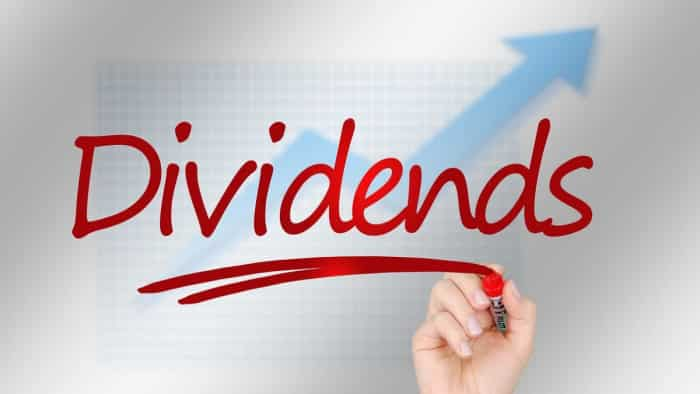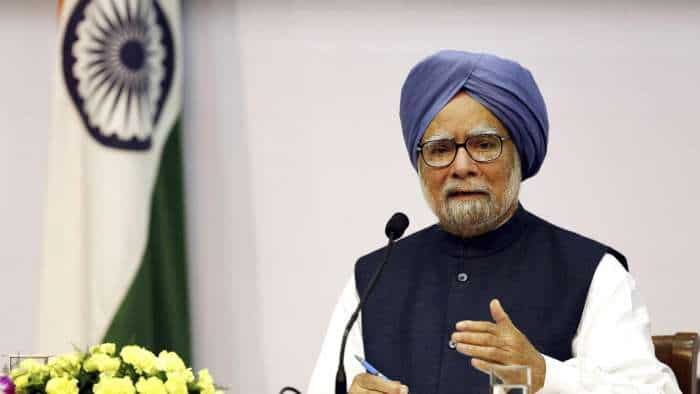HPCL currently has 322 EV charging stations, aim is to set up 5,000 units: MK Surana, CMD
Mukesh Kumar Surana, Chairman & Managing Director, Hindustan Petroleum Corporation Limited (HPCL), talks about Q2FY22 numbers, high fuel prices and its impact on demand, margin, GRM, plans related to the EV sector, CapEx and Barmer Refinery among others during an exclusive interview with Swati Khandelwal, Zee Business.

Mukesh Kumar Surana, Chairman & Managing Director, Hindustan Petroleum Corporation Limited (HPCL), talks about Q2FY22 numbers, high fuel prices and its impact on demand, margin, GRM, plans related to the EV sector, CapEx and Barmer Refinery among others during an exclusive interview with Swati Khandelwal, Zee Business. Edited Excerpts:
Q: How will you summarise the second-quarter numbers? Also, has the demand for diesel reached the pre-COVID levels?
A: First of all I will talk about the quarter results, there has been a profit of Rs 1,924 crore in the second quarter, which is 7.2% higher than the profit that we earned in the first quarter, which stood at Rs 1,795 crore. Overall, the refinery GRM - people would have felt it below the expectations - stood at $2.44 per barrel in the second quarter and if seen half-yearly, it stood at $2.87 per barrel. One reason for its reduction was that there was a shutdown in our Mumbai refinery, which was taken for expansion of the refinery. Now, the shutdown has been completed by now but at the time of shutdown, there is a fuel loss in startup, shutdown and stimulation among others. The crude prices were high, which had an impact due to which despite an improvement in product crack was not visible in the GRM. Due to these factors, few people would have thought that the company's GRM and profitability is slightly low. Otherwise, overall this is the second-highest quarterly profit for HPCL out of the post decontrol era. So, the results are fine from that aspect.
See Zee Business Live TV Streaming Below:
The shutdown we took at the refinery led to a decline in GRM but it is an investment for the future and whenever you will work on such projects then you will have to take such a shutdown to the commission, hook up and revamp it. The good thing is that we took this shutdown at a time when demand was slightly low and cracks were also a bit low. As the second wave of CORONA was a bit strong and there were restrictions on the industrial Oxygen which led to a spillover of the time but the project has been completed by now. Six units have been revamped in the process and two units have been created. So, it has been completed and the units are functional. Commissioning work of the units have been completed and stabilisation work for old units have been done and is going on for the next units. With this, the Mumbai refinery's capacity will increase by 2 million metric tonnes per annum and energy efficiency will also increase.
Q: Is high fuel price impacting the demand, if yes, how it is impacting your business?
A: Currently, prices are high because crude prices are high in the international markets and lie between $80-85 per barrel and at times, it has also crossed the mark of $85. Crack has also increased and exchange rates were also quite high. So, we were able to see the mixed effect of all this even at low prices. As the lockdown is opening up the demand is going up. One reason for the high price is that the demand is picking up very fast and the supply is not happening at the same speed because the producing companies have put voluntarily cuts in it. Due to high price, the demand for petrol has 7-8% higher than the pre-pandemic times as more people are travelling in their personal vehicles. Leisure travel is slightly low but the essential travel is happening, so to that extent demand is not being impacted. But, I feel that if the prices remain high for a long time then there can be a dampening effect can be seen on the recovery that has happened after the pandemic because there will be inertia, which could bring a sluggishness and have an impact on diesel demand. But, I feel that the prices will remain high in this quarter but slight moderation will be seen from the next quarter because these high prices are not sustainable in the long term as they will hit both the producer as well as the consumer. It will be impacted the most in the developing countries from where maximum demand is coming.
Q: HPCL's margin has declined from 4.4% to 3.6% in the same period last year. What is the reason for the decline in margins and what is your outlook for margins?
A: As far as the margin is concerned, as I have informed that on the refinery side the crude was less, the GRM was also slightly low due to fuel loss and the fixed costs were also low. But going forward, this additional capacity will be advantageous for us as the unit is being stabilised at present. Unit commissioning of expansion of Vizag refinery will also start at the end of the year. So, I think, all these factors, if cracks among others remain improved, will benefit the company.
Q: What were the GRMs and how much was the inventory gain this time?
A: We are not providing the details of the inventory gains for the last two quarters because it used to create a lot of confusion but yes as the prices have increased it led to inventory gains, although it is not that high, inventory gains are there.
Q: There is a focus on electricity and Indian Oil Corporation has announced the plan to launch 10,000 charging stations, across India, which means the space is being intensified a lot. You too have plans on the front. So, what are your plans for this space as even the government has a focus in the same area? Also, Prime Minister Narendra Modi at the COP26 has announced 2070 as the target for India to reach net-zero carbon emissions. How will it impact Oil Demand?
A: About 2 months ago at our, AGM, we announced our plans to establish 5,000 EV charging stations. I am happy to see a similar announcement by other companies in this direction. So, it is a good thing for the country that an ecosystem is being developed. HPCL is already working on it and at present, we have 322 stations that are equipped with charging facilities. We also have some agreements with other companies and start-ups with whom we are working. In addition, an ecosystem of EV charging should be developed in the country and if the consumer wants, then he has the option to use the EV vehicles. I think, going forward, it will be good even for the country as it is environment friendly and we should use all the resources that are available with us to meet the increasing demand for energy. So, in the near future and even for some decades, the oil will stay as an important component but we will have to use other energy resources to meet the increasing demand for energy and EV can also contribute to it and for it, even the vehicle manufacturers are also launching new models of electric vehicles. We the oil companies are also trying to develop the electric vehicle charging infrastructure. Beyond this, things will depend on consumer preference and their convenience as well economy. The government is also providing certain incentives in this direction and is trying to motivate people in this direction. When a scale of economy is built then the economy of convenience will drive the ecosystem.
Q: Apart from just setting up infrastructure like charging stations will you also participate in battery making, manufacturing and swapping, as a few of your competitors are looking forward to ways to participate in it? What kind of CapEx has been lined up in that direction?
A: We are a business entity, so, in any item where the company feels that there is a business opportunity we will definitely explore it. Currently, of the 322 stations, some are charging stations, a few are swapping stations and we also have certain investments in start-ups, who are developing a different model. So, our R&D centre is working on batteries, storage and hydrogen. So, HPCL will try to leverage all the opportunities that will come from this new energy or the green energy and it is also working on it.
Q: What kind of amount has been lined up for investment in this new-age energy space?
A: Three things are mainly coming in this new energy space at present and they are:
Biofuel, where we are setting up 2G and 1G plants. In it, the 2G (second generation) ethanol bio-refinery at Bhatinda is around Rs 1,400 crore. We are also establishing a 1G ethanol plant in Badayu, Uttar Pradesh. So, these are in our CapEx. We already have two ethanol-producing plants and we are investing more in those as they used to be sugar-based and there are chances that they will also have a green base.
Apart from this, in CBG, we have granted alloy to private entrepreneurs - whose CapEx is not on us but themselves - to establish their plants and we will provide an off-take guarantee to them.
In addition, we are also investing in EV charging, we have both models in it - CapEx Model and Opex Model. Our partner companies will be investing in the Opex Model and we will be investing a bit in the CapEx model. In the gas business, we also have some investment in the LNG business. We are working in 20 areas in CGD.
In this complete space, we will have an investment of around Rs 10,000 crore.
Q: Your Barmer Refinery was expected to start in FY24, but now with Rajasthan Government approving additional Rs 150 for this project, should we expect it to start before FY24 and will you be needing more funds for this project?
A: There is a need for clarification on this. Actually, the Rajasthan government and HPCL have participation in this refinery in which HPCL has 74% participation and the remaining 26% is with the Rajasthan government and its total investment has a debt-equity ratio. Debt is taken from the bank but in terms of equity, both companies provide it as per the proportion of their equity. So, periodically as per the requirement of the project, joint venture company, HPCL and Rajasthan Refinery Limited keeps funding it. So, this latest Rs 150 crore from the Rajasthan government is a part of the total funding. As per the requirement, 26% is contributed by the Rajasthan government and 74% by HPCL. So, HPCL and Rajasthan government, have contributed to the same. The work on the refinery is moving at a good pace and recently, the main crude distillation column has been completed.
Get Latest Business News, Stock Market Updates and Videos; Check your tax outgo through Income Tax Calculator and save money through our Personal Finance coverage. Check Business Breaking News Live on Zee Business Twitter and Facebook. Subscribe on YouTube.
RECOMMENDED STORIES
12:17 PM IST











 LPG Price Cut: Commercial cooking gas becomes cheaper; check out new rates in New Delhi, Mumbai, Kolkata, Chennai
LPG Price Cut: Commercial cooking gas becomes cheaper; check out new rates in New Delhi, Mumbai, Kolkata, Chennai MG Motor, HPCL join hands to enhance EV charging infrastructure
MG Motor, HPCL join hands to enhance EV charging infrastructure HPCL Q4 Results Preview: Multibagger OMC PSU expected to report strong operational numbers
HPCL Q4 Results Preview: Multibagger OMC PSU expected to report strong operational numbers  HPCL Q3 results: Net profit trebles to Rs 529 crore
HPCL Q3 results: Net profit trebles to Rs 529 crore HPCL shares hit 52-week high; here is why investors remain upbeat
HPCL shares hit 52-week high; here is why investors remain upbeat